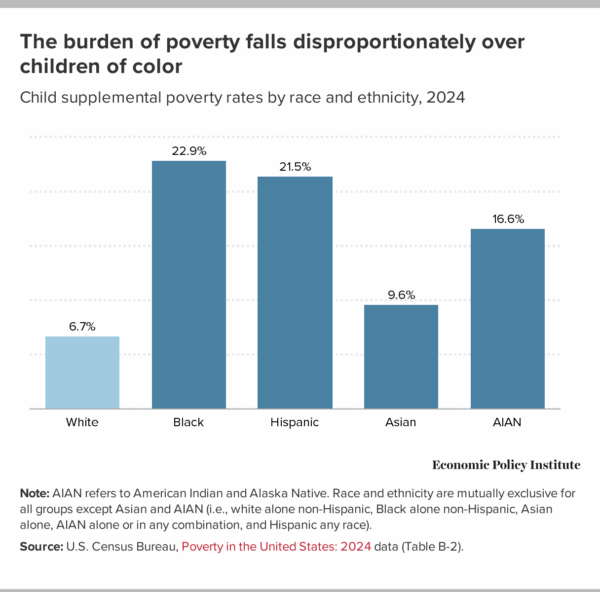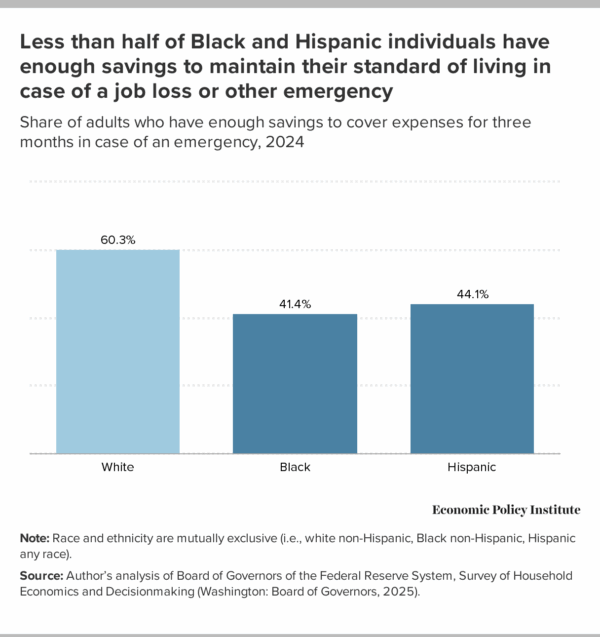Billionaire-funded Trump Accounts won’t end child poverty: But they will widen structural inequities in the U.S. economy
In recent months, uber-rich families and companies have pledged millions of dollars to support a new savings program for children, known as Trump Accounts. In early December, for example, Dell Founder and CEO Michael Dell made a historic pledge of $6.25 billion to strengthen the new infrastructure for Trump Accounts. This gift aims to provide about 25 million children under age 11, from economically disadvantaged zip codes, with about $250 as an incentive to join the new savings vehicle. Soon after this, hedge fund manager Ray Dalio pledged $75 million to certain children in Connecticut in another effort to encourage additional participation.
The Trump-Vance administration has announced each of these charitable contributions with considerable fanfare, staging press and campaign-style events and promising that U.S. companies and other philanthropist will soon follow. What is often missing from the White House celebrations is an explanation of how exactly these gifts and the new Trump Accounts will alleviate child poverty and inequity.
The truth is that the U.S. falls behind peer countries from the developed world in its fight against child poverty. These deprivations are particularly harmful to children of color due the deterministic role that structural racism plays in the American economy. A pretax and voluntary savings vehicle with little government support, and at the mercy of charitable inclinations, will do little for the millions of low-income families who can’t afford to save. In fact, these accounts are poised to compound structural inequities that have persistently delivered disparate outcomes for disadvantaged families. This is because the Trump Accounts fail to adequately account for the scope of child poverty and inequity. They also crudely overlook the root causes of these issues by framing them as the result of insufficient savings.
Child poverty is a defining feature of the U.S. economyMore than 9 million children struggle with poverty in the United States. This amounts to more than 1 in 10 children who live in households with insufficient resources to provide an adequate and dignifying standard of living in the world’s richest country. This is not a new economic reality. Since 2009, child poverty has declined by less than 4 percentage points in the U.S., leaving the country with the second-highest child poverty rate in the rich world—behind only Urugay, a Latin American country with a significantly lower living standard.
Child poverty in the U.S. is especially harmful to children of color. More than 1 in 5 Black and Hispanic children struggled below the poverty line (see Figure A). Similarly, more than 1 in 6 (16.6%) American Indian and Alaska Native (AIAN) children have remained under the poverty line since 2022. Overall, children of color are more than twice as likely as their white peers to experience material shortcomings. This prolonged exposure to poverty is likely to translate into even broader disadvantages throughout these children’s lives, with relatively poorer outcomes than their more affluent peers in health, education, earnings, and even retirement.
Figure A
Making a significant dent on child poverty in the U.S. will require more than a voluntary savings vehicle backed by a one-time federal government contribution of $1,000 for each of the 3 million children born annually through 2028. This promise under the new Trump Accounts severely understates the problem of child poverty in the U.S. and it carelessly misidentifies the drivers of early deprivation and inequity.
Child poverty is a policy choice driven by a withering welfare state and structural inequities in the labor marketIn 2021, the U.S. proved that it deliberately tolerates high poverty rates for children. The expanded welfare state that followed the pandemic led to a historic decline in child poverty. Economic relief measures and expanded access for low-income families to tax credits (like the Child Tax Credit) and basic needs programs (like SNAP) helped reduce the prevalence of child poverty by nearly half between 2020 and 2021. However, all these gains quickly vanished when this enhanced social safety net expired. Today, child poverty is higher than it was in 2019, and it is likely to worsen with major cuts to programs like SNAP and Medicaid the Trump-Vance administration signed into law last summer. These programs lifted 1.4 million and 6.1 million children out of poverty in 2024, respectively.
Alleviating child poverty in the U.S. will also require confronting the low-wage employment regime sustained by a federal minimum wage that officially became a poverty wage in 2025. Low-wage work leaves more than 10 million workers in poverty. The growing divergence between the productivity of the U.S. economy and the earnings of the typical worker leaves millions of workers vulnerable to poverty and economic insecurity. About 67 million workers earn less than $25 per hour, a threshold considerably lower than the hourly earnings of a typical worker had their pay kept pace with productivity.
The defining role of structural racism in the U.S. labor market means that workers of color are more likely than their white peers to be part of the low-wage workforce. These workers of color are also more exposed than their peers to unemployment and lack dependable and consistent income. Compared with less than 1 in 3 (31.5%) of their white peers, more than 2 in 5 Black (43.3%) and Hispanic (46.3%) adults report having difficulties paying their bills due to monthly fluctuations in income. This economic insecurity means that less than half of Black and Hispanic adults have enough savings to cover expenses for three months in case of a job loss or other emergency (see Figure B). A savings vehicle without continued government support for disadvantaged families will only deepen existing inequities for families who can’t even afford to maintain their living standard in the event of an unexpected economic shock.
Figure B Trump Accounts distract us from real solutions that lean on the functional power of wealth, a strong labor market and welfare state
Trump Accounts distract us from real solutions that lean on the functional power of wealth, a strong labor market and welfare state
Trump’s new savings vehicle for children falls short of the more ambitious Baby Bonds proposed by economists like Darrick Hamilton and William Darity. Since 2021, versions of Baby Bonds legislation have been introduced federally and in several states. Unlike Trump Accounts, national Baby Bonds commit the federal government to a publicly funded account beyond an initial endowment with additional contributions until the child reaches the age of 18. These continued contributions by the federal government would follow a progressive structure, with children from resource constrained households receiving relatively larger endowments that they can later access at the age of 18 to purchase a home or start a business.
The continued commitment to a federally funded and progressively seeded account means that Baby Bonds are intentionally designed to narrow racial disparities in wealth. Since families of color only have a fraction of the net worth that their white peers enjoy, the larger public contributions to children from resource constrained households would disproportionately benefit children of color. This explains why impact assessments show that Baby Bonds can effectively narrow the racial wealth disparities that reflect a long history of economic exploitation and exclusion.
Without these characteristics, Trump’s voluntary savings accounts are poised to widen wealth disparities for generations. The more resource constrained families will be unable to keep up with the contributions of their more affluent peers—broadening inequities in wealth even further. This is particularly true under the Trump-Vance economy, characterized by sluggish job growth and rising unemployment. Trump’s economy is also one in which food insecure families that rely on nutritional assistance programs like SNAP—and those that rely on Medicaid and CHIP for health coverage—face ever more stringent conditions intentionally designed to limit access to support and to raise questions about the deservingness of social assistance. At this rate, the Trump-Vance administration is looking to make the U.S. the leader of child poverty in the rich world.

Recent comments